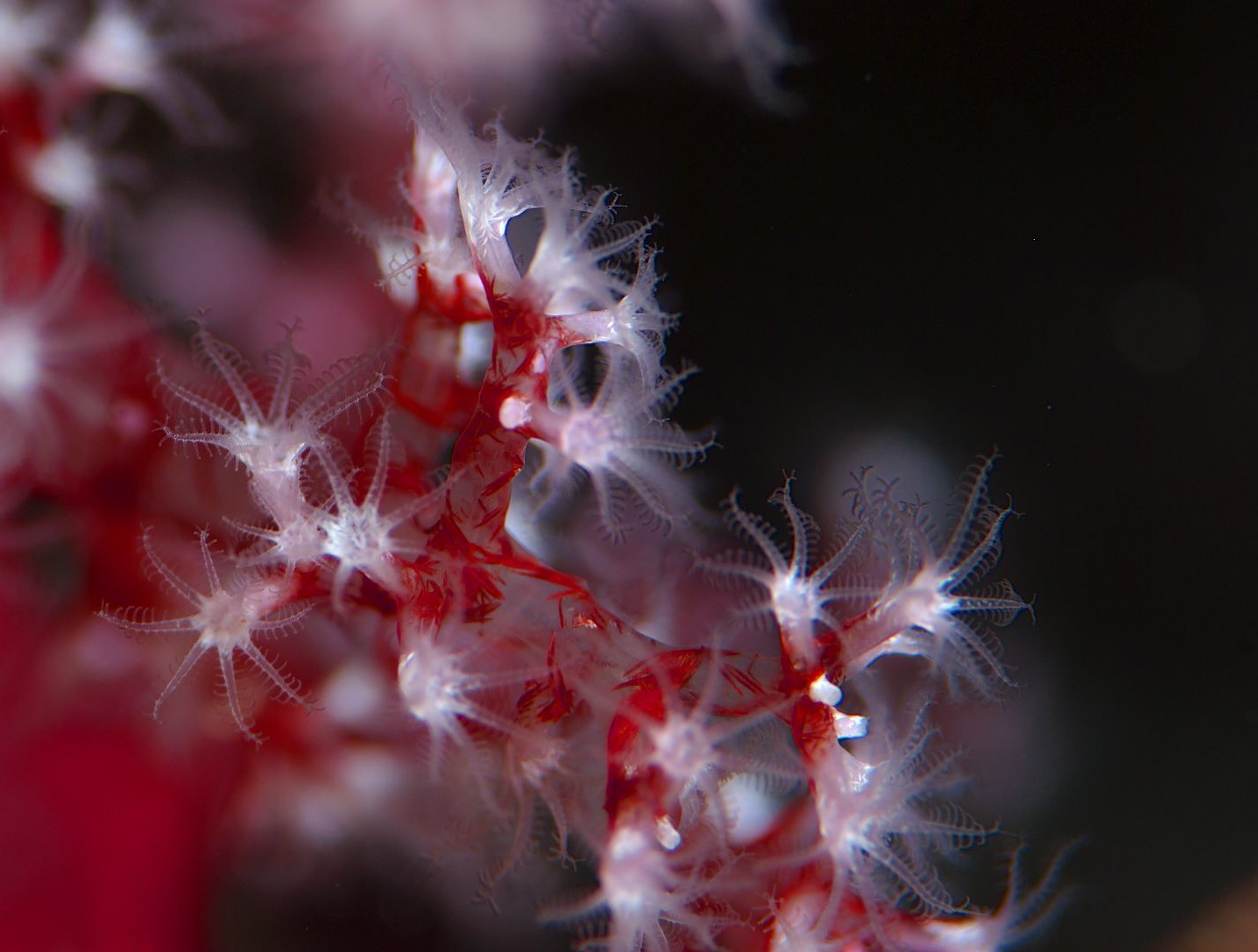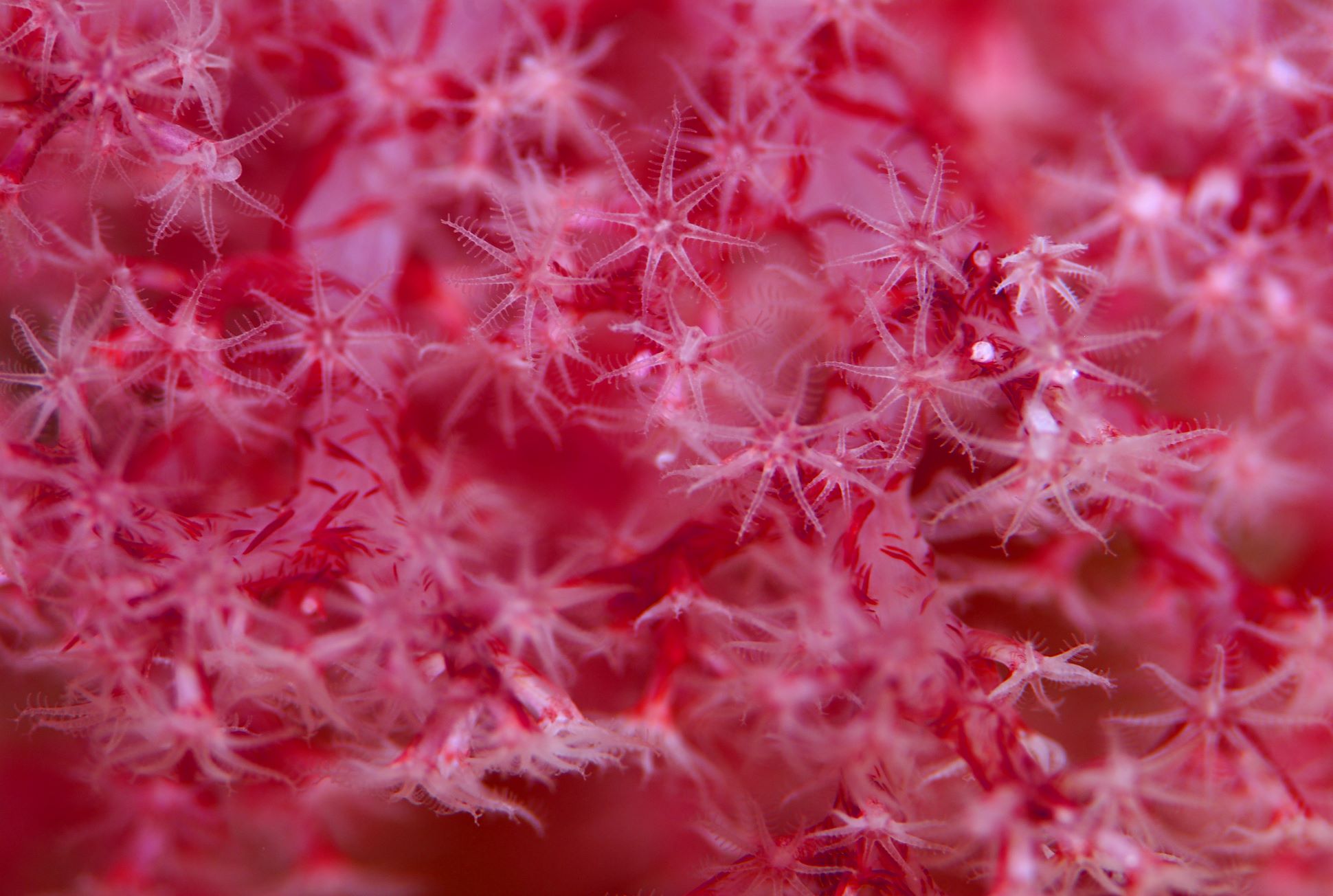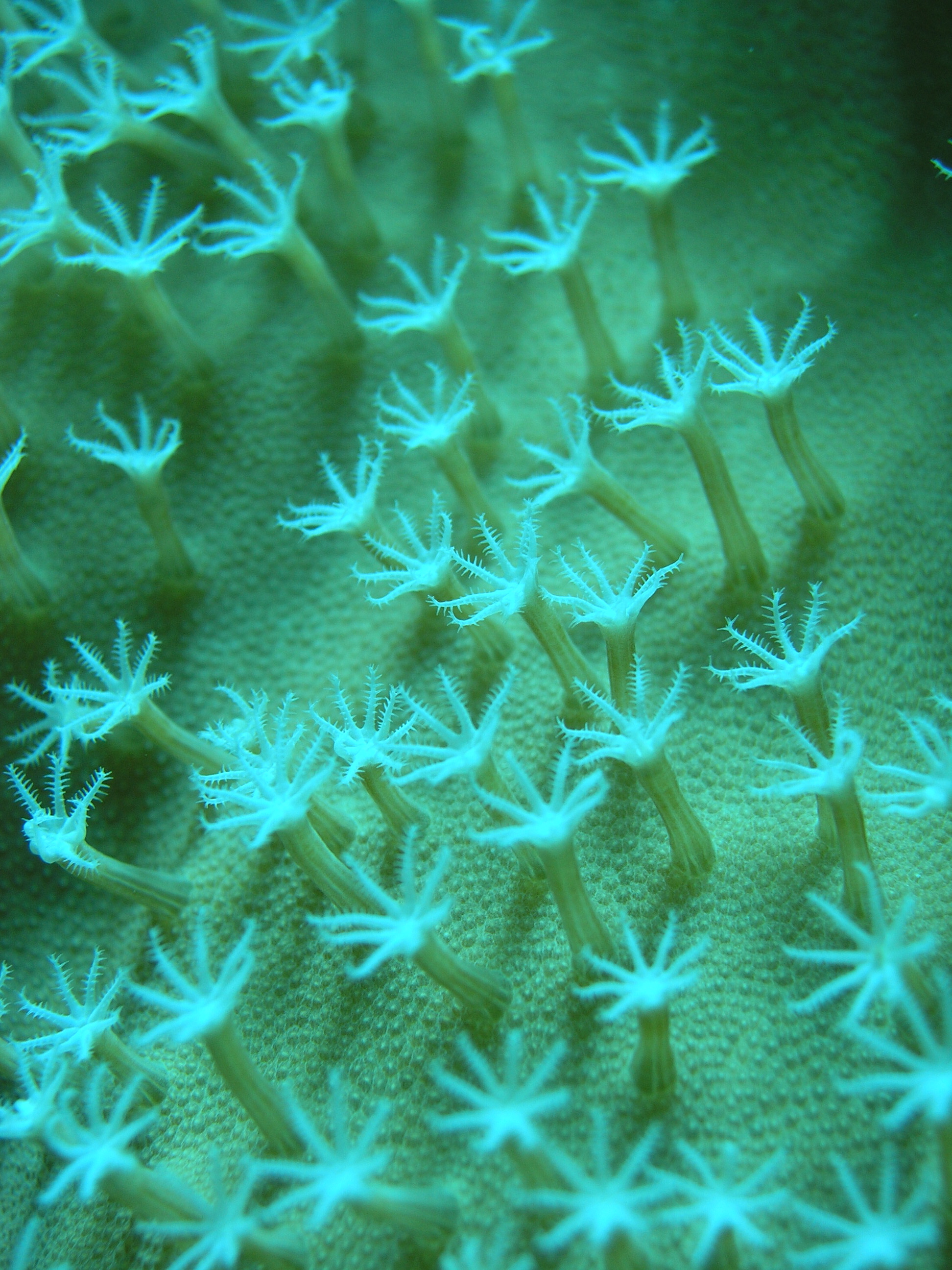Post by Guest Blogger Niels Rijneveld
How corals feed
Blessed with diving on coral reefs every day, I often ask our Divemasters and Instructors what they’ve seen on their dive. Surprisingly, very few tell about the stunning corals they see and in fact, it doesn’t even seem important enough to mention it in a diver’s logbook. I bet that most don’t even know what they’re looking at.

Corals fight back
The easiest way to visualize the coral animal is to think of an upside down jellyfish. They have a mouth and a gut, and a more apparent ring of tentacles. These tentacles are essential for feeding and can be extended or retracted within the coral. Though they usually don’t attempt to catch divers, I’m sure you’ve experienced hungry corals at work. The surface area of the tentacles is covered with stinging cells – or cnidocysts. Triggers such as movement and chemical cues can set off an electric signal provoking an explosive exocytosis of these harpoon-like structures. Swim too close to a coral and you will feel its stinging capabilities. Another reason to improve your buoyancy control!

Candlelight dinner
Corals like haute-cuisine. Late at night, after sunset most of the corals start to feed and emerge their tentacles to expose them to the water current. Their harpoons will fire at passing planktonic animals, such as crustaceans, cnidarians or molluscs. Yes, corals too like their shrimp cocktail and crab salad! This plankton tends to migrate vertically through the water column at night to avoid predators, so that’s the time for corals to wake up and make some dinner plans.

Gutted
Once successful, the tentacles will transport the unfortunate prey to the coral mouth for digestion. Recently, it has been proved that corals are also capable of feeding externally. That means that they can extend their guts outside of the mouth! The so-called mesenterial filaments can be extended from the polyp and contain cells that secrete digestive enzymes. External feeding could increase daily nutrient uptake by about twenty times!
They’re actually vegetarians
But getting dirty hands from catching plankton from the water only provides the coral with less than 10% of the required energy.
In my next article I will elaborate more on the vegetarian side of the coral diet.

